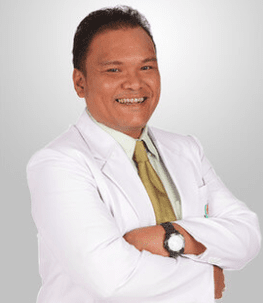What do you think is the next big “hot topic” in the pain field?
Even though “personalized pain management strategies” is not entirely new, I am looking forward to seeing the progress on this particular approach, especially in chronic non-cancer pain, which we as neurologists mostly deal with. What most interests me is personalized assessment and also management using a biopsychosocial approach. Surely there are significant discoveries regarding pharmacogenomics and pharmacokinetics that can lead us to prescribe a medication to a specific type of person, but identification of psychosocial factors that could act as significant contributors to the overall well-being of the patient is also very important. I see many patients with chronic painful neuropathies, headaches, central neuropathic pain, phantom limb pain, etc and there is something different in each and every patient even though the diagnosis is the same. I believe that if the contributing factors and comorbidities are different, then we need to make an approach in a different way for each and every one of them. As a neurologist, I am familiar with pain pathways, pain mechanisms, central sensitization, mechanism of pain modulation along with neurotransmitters, and so on, but introducing and practicing the concept into real action, both in the personalized patient assessment and management plan, is always a challenge. This understanding then brings us to realize how important a multidisciplinary approach is.
What has been your biggest professional challenge/obstacle thus far and how did you handle it/overcome it?
Introducing a multidisciplinary pain management concept for chronic non-cancer pain using a biopsychosocial approach. I’ve heard many experiences describing how difficult it can be. It is one thing to ask someone to be a leader of the team, but to persuade some others to be a good member is something else. Training someone to be a leader is not as difficult as training someone to be a good member. I think we need to emphasize this in introducing multidisciplinary services especially in an already established health care institution where most of the specialties and categories of health workers are available. I am a general neurologist, not a pain consultant. I can only be a member of the team, dealing with the neurological-related aspects of pain but I do not mind being a member at all. In order for the patients to be well treated, I am more than happy to do my part.
Why are you an IASP member?
I can find many subjects about pain related to my specialties, and I am sure others will find the same. I love that IASP is there for everybody. It fulfills my expectation and need of an organization that is multidisciplinary. I can interact and build networking with many persons from different backgrounds/specialties/areas of interest and how each of them contributes to the study of pain through their field and expertise. These facts enrich my view on pain.
What is your favorite member benefit?
Access to PAIN and the opportunity to interact with many experts. Being involved in Multidisciplinary Pain Center toolkit advisory board is a great experience for me.
What do you do in your spare time? Do you have any hobbies, other pursuits, or hidden talents?
I love cooking in my spare time. I’m a home cook actually. My ideas are flowing and my burdens disappear when I am in the kitchen wearing my apron and trying to improvise my mother’s recipes and other Indonesian cuisines as well. I can cook rendang very nicely, my friends said, Soto, Medan Style Chicken Noodle soup (miesop ayam), and so on. I love traveling although now I cannot enjoy it due to the pandemic. Traveling and meeting new people always energizes me. I love observing other’s cultures and daily life. Everywhere I go, I always spare time to go to the local traditional market and observe the daily activities of local people there.
If you could live anywhere in the world, where would it be and why?
I would be happy to live for a while in Australia. Observing and learning from Professor Michael Nicholas and team on how they managed to conduct a multidisciplinary pain program for their patients. Then I can go back home and adopt the program and use it to treat patients, in a team.


